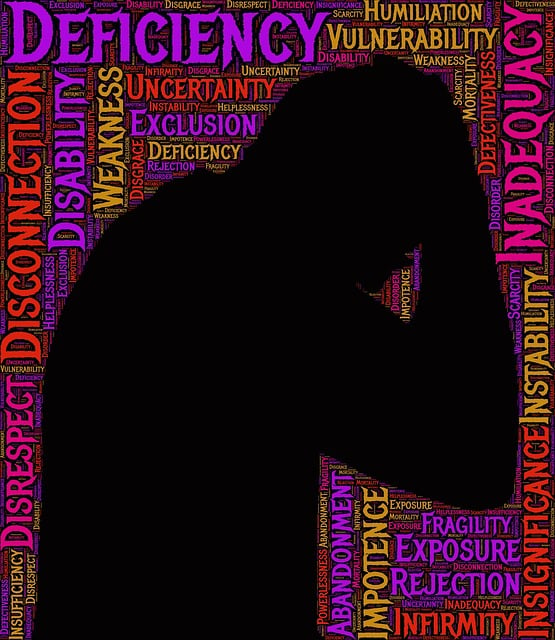Resilience, built through practices like Superior Somatic Experiencing (SE) Therapy integrated with RFM (Recovery, Flexibility, Mastery) exercises, equips individuals to confront life's challenges. SE therapy leverages the mind-body connection for superior stress and trauma management, fostering self-awareness and emotional release. Regular physical exercise strengthens resilience by enhancing emotional intelligence and well-being. Tailored exercises combining mindfulness, deep breathing, and progressive muscle relaxation mitigate distress, provide lasting tools for navigating complexities, and promote mental balance.
Resilience is our ability to adapt and bounce back from adversity. RFM (Resourceful Failure Management) is a proven method to build this vital skill, helping us navigate life’s challenges with greater ease. This article explores how Superior Somatic Experiencing (SE) Therapy, combined with RFM exercises, can significantly enhance resilience. We’ll delve into the science behind SE, its role in trauma healing, and practical tips for designing effective exercises that foster mental and emotional agility.
- Understanding RFM: The Foundation of Resilience
- Somatic Experiencing Therapy: A Powerful Approach
- The Role of Exercise in Enhancing Resilience
- Designing Effective Resilience Building Exercises
- Integrating SE and RFM for Optimal Results
Understanding RFM: The Foundation of Resilience

Resilience is a vital component of mental wellness, enabling individuals to navigate life’s challenges with strength and adaptability. At the core of building this resilience lies the concept of RFM, or Recovery, Flexibility, and Mastery. This framework serves as a powerful guide for cultivating superior somatic experiencing therapy techniques that enhance an individual’s ability to recover from stressful situations, exhibit flexibility in their responses, and regain a sense of control.
RFM focuses on empowering individuals with effective stress reduction methods, fostering mental wellness through compassion cultivation practices, and encouraging personal growth by promoting mastery over one’s reactions. By understanding and applying these principles, individuals can develop the internal resources needed to overcome adversity, thrive under pressure, and maintain a balanced state of mind in any environment.
Somatic Experiencing Therapy: A Powerful Approach

Somatic Experiencing Therapy (SET) is a groundbreaking approach to healing and resilience building that has gained recognition for its superior effectiveness in managing stress and trauma. This therapy focuses on the deep connection between the mind, body, and spirit, acknowledging that emotional well-being is intrinsically linked to physical health. By tapping into this somatic intelligence, individuals can unlock profound changes and enhance their overall mental health.
In today’s fast-paced world, where stress management is crucial for maintaining a balanced lifestyle, SET offers a unique perspective on self-care routine development. It encourages clients to explore and process trapped sensations and memories, leading to a remarkable confidence boost. Through specific exercises tailored to individual needs, this therapy facilitates the release of held tension, allowing people to reclaim their physical and emotional autonomy.
The Role of Exercise in Enhancing Resilience

Regular physical exercise plays a pivotal role in bolstering resilience, offering individuals a powerful tool to navigate life’s challenges with greater equanimity and emotional fortitude. Beyond improving physical health, activities like Superior Somatic Experiencing Therapy (SSET) contribute significantly to emotional intelligence and overall well-being. This therapeutic form of exercise focuses on the mind-body connection, helping individuals process and release traumatic memories or stressful experiences stored in the body. By fostering cultural sensitivity in mental healthcare practice, SSET integrates mindfulness techniques that promote emotional well-being promotion techniques, enabling people to develop a deeper sense of self-awareness and resilience.
Through repetitive movement and heightened sensory awareness, exercise helps regulate stress responses and reinforces neural pathways associated with positive emotions. This biofeedback mechanism allows individuals to cultivate a stronger ability to manage stress and adversity, enhancing their capacity for emotional recovery after challenging situations. By integrating these practices into daily routines, people can build mental and emotional resilience, ensuring they are better equipped to handle life’s curveballs with grace and composure.
Designing Effective Resilience Building Exercises

Designing effective resilience-building exercises is an art that combines various therapeutic techniques to nurture inner strength and foster emotional healing processes. One highly regarded approach is Superior Somatic Experiencing Therapy, which focuses on the connection between bodily sensations and emotional experiences. Through this therapy, individuals learn to recognize and release trapped emotions, enhancing their ability to cope with stress and adversity.
These exercises should be tailored to individual needs, addressing specific challenges like burnout prevention. By incorporating mindfulness, deep breathing, and progressive muscle relaxation, participants can develop a heightened sense of awareness and control over their physiological responses. Such practices not only help in managing immediate distress but also equip individuals with long-lasting tools for navigating life’s complexities and cultivating resilience.
Integrating SE and RFM for Optimal Results

Integrating Superior Somatic Experiencing (SE) Therapy with Resiliency, Fitness, and Mindfulness (RFM) exercises can significantly enhance both physical and mental health outcomes. SE therapy, known for its ability to help individuals process traumatic memories and reduce stress response, forms a robust foundation when combined with RFM practices. This synergy allows for a holistic approach to well-being, addressing not just the symptoms but also the underlying causes of stress and anxiety.
By incorporating Mental Health Education Programs Design that emphasize mindfulness and journaling exercises into the RFM routine, individuals gain valuable tools for self-regulation and emotional management. Stress Management becomes more accessible when these practices are seamlessly woven into daily life, fostering a sense of balance and resilience. The result is an empowered individual equipped to navigate life’s challenges with greater clarity and composure.
Resilience is a powerful tool for navigating life’s challenges, and by combining techniques like RFM (Resilience, Flexibility, and Mastery) with evidence-based practices such as Superior Somatic Experiencing Therapy, individuals can enhance their ability to bounce back from adversity. This holistic approach, which integrates exercise into the equation, offers a comprehensive strategy for building mental and emotional strength. Through thoughtful design and implementation of resilience-building exercises, people can cultivate a deeper sense of control, empowerment, and overall well-being.











